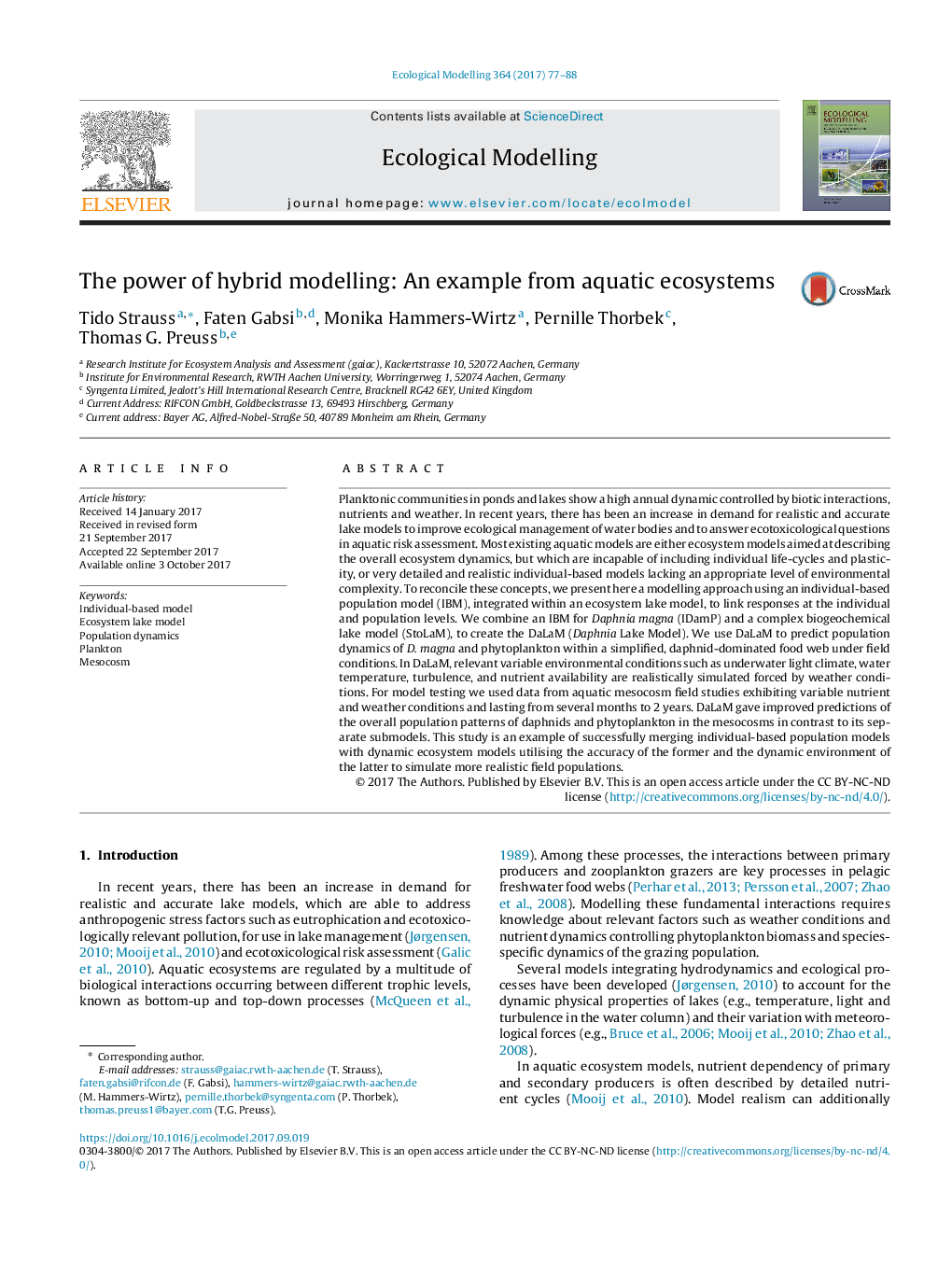| Article ID | Journal | Published Year | Pages | File Type |
|---|---|---|---|---|
| 5741983 | Ecological Modelling | 2017 | 12 Pages |
â¢A hybrid model (DaLaM) was developed combining an individual-based population model for Daphnia magna and an ecosystem lake model.â¢The submodels were previously parameterised independently mainly based on laboratory experiments and literature data.â¢DaLaM was tested against independent field observations using aquatic mesocosms lasting from several months to 2 years.â¢DaLaM improved the prediction of outdoor population patterns of daphnids and phytoplankton in contrast to its separate submodels.â¢This study is an example of successfully merging individual-based population models with dynamic ecosystem models.
Planktonic communities in ponds and lakes show a high annual dynamic controlled by biotic interactions, nutrients and weather. In recent years, there has been an increase in demand for realistic and accurate lake models to improve ecological management of water bodies and to answer ecotoxicological questions in aquatic risk assessment. Most existing aquatic models are either ecosystem models aimed at describing the overall ecosystem dynamics, but which are incapable of including individual life-cycles and plasticity, or very detailed and realistic individual-based models lacking an appropriate level of environmental complexity. To reconcile these concepts, we present here a modelling approach using an individual-based population model (IBM), integrated within an ecosystem lake model, to link responses at the individual and population levels. We combine an IBM for Daphnia magna (IDamP) and a complex biogeochemical lake model (StoLaM), to create the DaLaM (Daphnia Lake Model). We use DaLaM to predict population dynamics of D. magna and phytoplankton within a simplified, daphnid-dominated food web under field conditions. In DaLaM, relevant variable environmental conditions such as underwater light climate, water temperature, turbulence, and nutrient availability are realistically simulated forced by weather conditions. For model testing we used data from aquatic mesocosm field studies exhibiting variable nutrient and weather conditions and lasting from several months to 2 years. DaLaM gave improved predictions of the overall population patterns of daphnids and phytoplankton in the mesocosms in contrast to its separate submodels. This study is an example of successfully merging individual-based population models with dynamic ecosystem models utilising the accuracy of the former and the dynamic environment of the latter to simulate more realistic field populations.
